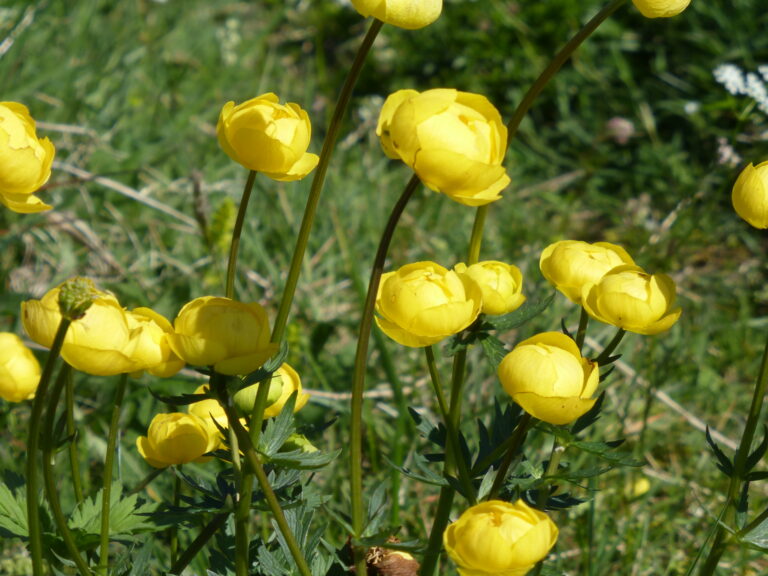The Midweek Botany Group started twenty years ago in 1998 when we (Janet Angel and Chris Irvine) had been going on the botany section weekend field meetings for several years. We wanted to do more botany so asked for a notice to be put in the Bulletin asking people to join us on Wednesday afternoons for informal outings. The first meeting was at Whittle Dene near Ovingham and, by coincidence, that was also the location for the first ever field meeting of the Society. Six other people turned up that day and went on to form the nucleus of the Midweek Botany Group. The first members (Ann and Gordon Young, Joyce and Tom Humphris, Ann Stephenson, Irene Foggett, Chris and Janet) soon became firm friends and thoroughly enjoyed botanising in good company. Among the plants we found that first day were Spindle Euonymus europaeus, Hart’s-tongue Fern Asplenium scolopendrium and Moschatel Adoxa moschatellina.

Initially, some of us were still working so couldn’t manage all day trips or every week, but Wednesday afternoons soon became special to us all. At the end of each outing we would arrange where to meet a fortnight later and everyone offered their ideas. Because we lived at scattered locations the suggestions were spread throughout the region so we visited a good variety of places. Some were well-known botanical sites whilst others were areas where someone had noticed a variety of plants that looked interesting. Right from the beginning, we made lists of all species found and Gordon typed these up together with a “tip of the week” to help us identify them in the future. All the records were entered in the Northumberland database to help the County Recorder George Swan with the mammoth task of recording all the plants found in Northumberland.
Initially, it was a self-taught group. Everyone had their own pieces of knowledge and copies of different field guides so we worked together to work out the identity of less well-known plants. This helped us remember them on future occasions. We soon became able to tackle some of the more difficult groups such as ferns, grasses and sedges.
We all wanted to expand our horizons and so the idea of a botany holiday was born. The first was to the Burren in Ireland and involved driving in two cars to Liverpool, a ferry to Dublin and then a long drive across Ireland to Lisdoonvanah where we all stayed together in a comfortable hotel. The botany was exciting and we found several species unfamiliar to us such as Fly Orchid Ophrys insectifera and Large-flowered Butterwort Pinguicula grandiflora. We all agreed that the holiday had been a success and was followed by annual trips away to Norfolk, the Peak District, Yorkshire, Wales, Scotland and many other places.
Gradually other people joined us, usually as they retired and had more time. Everyone fitted in and enjoyed the friendly atmosphere and opportunity to learn from others. As the Group grew larger it became necessary to run it in a more organised way and a yearly programme was written. Everyone contributed an idea and soon we had enough suggestions to make the outings weekly and all day throughout the summer. We soon had the idea of winter walks, again with different people suggesting a variety of routes and so the outings continued all round the year. It is surprising how much botany can be done in December! The trips were wide-ranging and went from the Cheviots to Teesdale and from Cumbria to the Northumberland coast.
As we became more well-known we were asked to carry out plant surveys for a number of organisations such as Natural England, the National Trust, Northumberland Wildlife Trust and individual landowners.
In 2008 we celebrated our tenth birthday with a beach party at Druridge Bay with games, swimming and a cake. This year we again went to the coast for our twentieth birthday party. This time we went to the new visitor centre at Low Hauxley and walked round the reserve in the morning identifying the plants and birds found there. In the afternoon we looked at the plants on the beach including Sea Sandwort Honckenya peploides, Prickly Saltwort Salsola kali and several Oraches Atriplex. After all that botany we celebrated with tea and delicious cake provided by two of our members.
After twenty years the Group is still thriving with an ever-growing membership. It is still a friendly welcoming group which functions, as ever, by members contributing to the programme which is now very successfully compiled by Judy Summerson.
By Janet Angel, NHSN Trustee